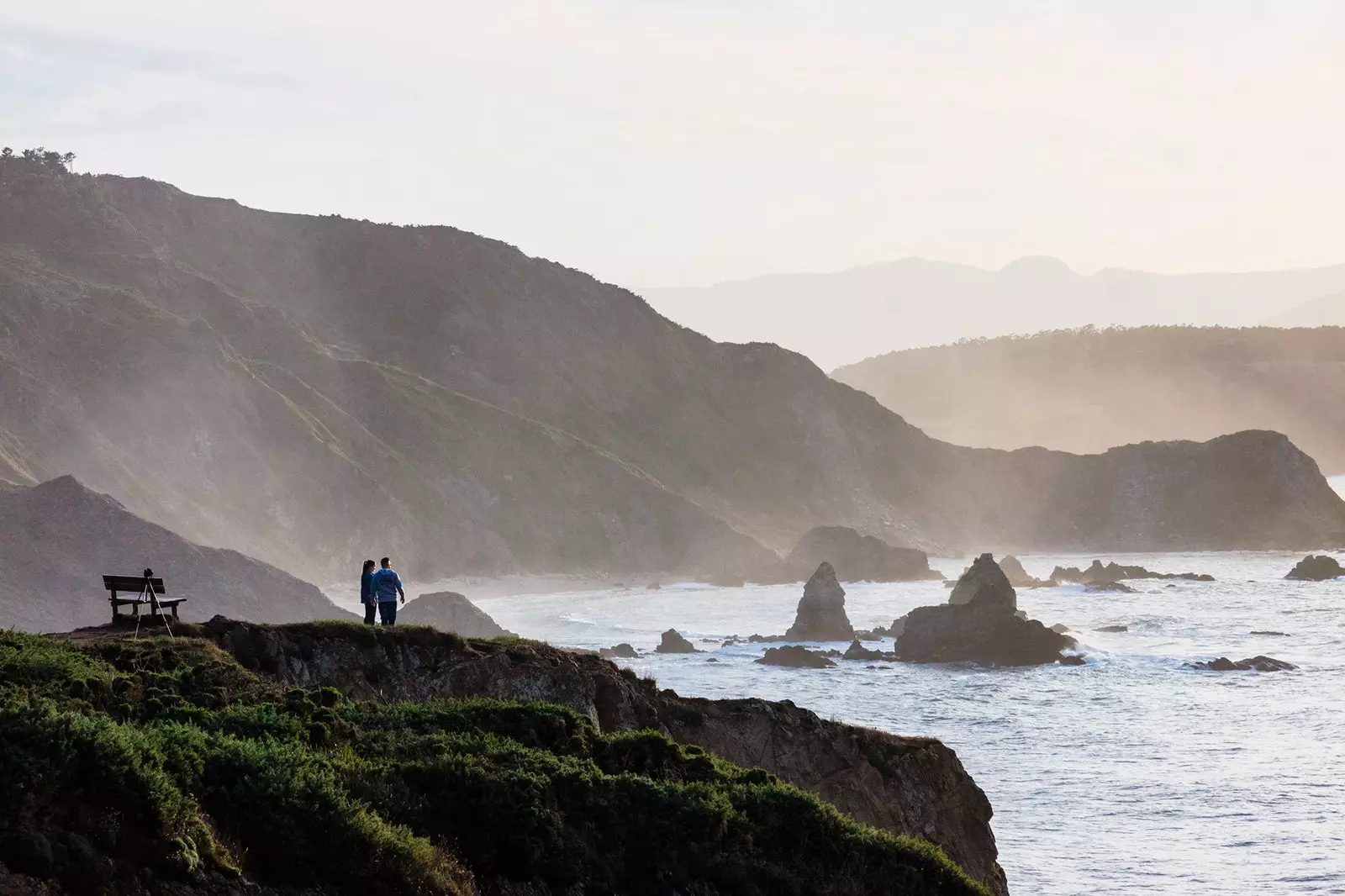
Cliffs of Loiba, in Ortigueira
It is known by many that one of the best ways to discover Spain is to get in a car and go for miles. The network of rural highways in our country runs from north to south through landscapes of breathtaking beauty and strong contrasts, crossing cities and towns anchored in time.
Many of the most emblematic road trips, such as the Basque Coast or the coves of Cabo de Gata, are already saturated by tourists and onlookers, but there are still, hidden in the corners of our geography, corners where one can experience the feeling that one is 'discovering' and not visiting.
The northernmost of the Rias Altas **(Ortigueira, A Barqueiro, Viveiro and Foz) ** are among these hidden places waiting to be discovered by a driver who is not afraid to travel miles.
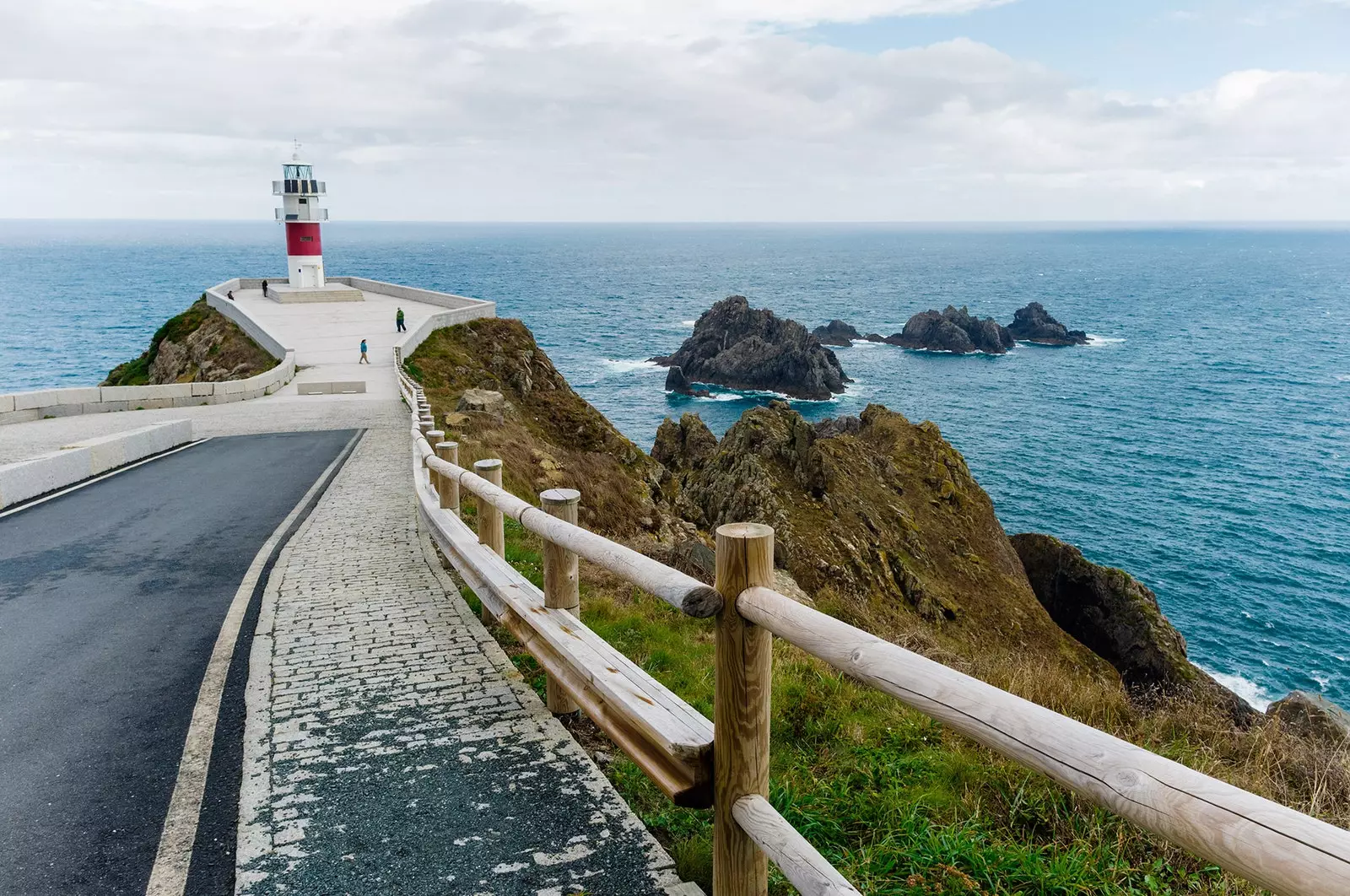
Cabo Ortegal, the end of your 'road trip'
Located in the northwest corner of our peninsula, Cape Ortegal and Estaca de Bares they dig like claws into the Atlantic Ocean, as if the earth wanted to cling to its salty neighbor, stubborn to give up its wild nature.
Between the fingers of granite, protected by imposing cliffs, open wide estuaries that give shelter to a wide range of animal species, and serve as a home for communities proud of their land and traditions, isolated for many centuries due to its geography, but now, thanks to the road network, it offers itself, virgin and yet to be discovered, to the curious driver.
The slate roofs over whitewashed houses indicate to the traveler that he arrives at Foz who is leaving Asturias and enters Galicia.
Mysterious land, as wide as the palm of a hand, crossed by thousands of valleys, streams, forests and mountains that serve as a shield and filter for travelers seeking the typical sun and beach tourism, the Rías Altas stand out in spirit from the more accessible and well-known Rías Baixas.
In the extreme north of Spain, weeks can go by without seeing the sun and, perhaps for this reason, Galicians have experienced a history of clouds and clearings, showers and blinding light, glories and sleeplessness, in accordance with the climate that waters their land.
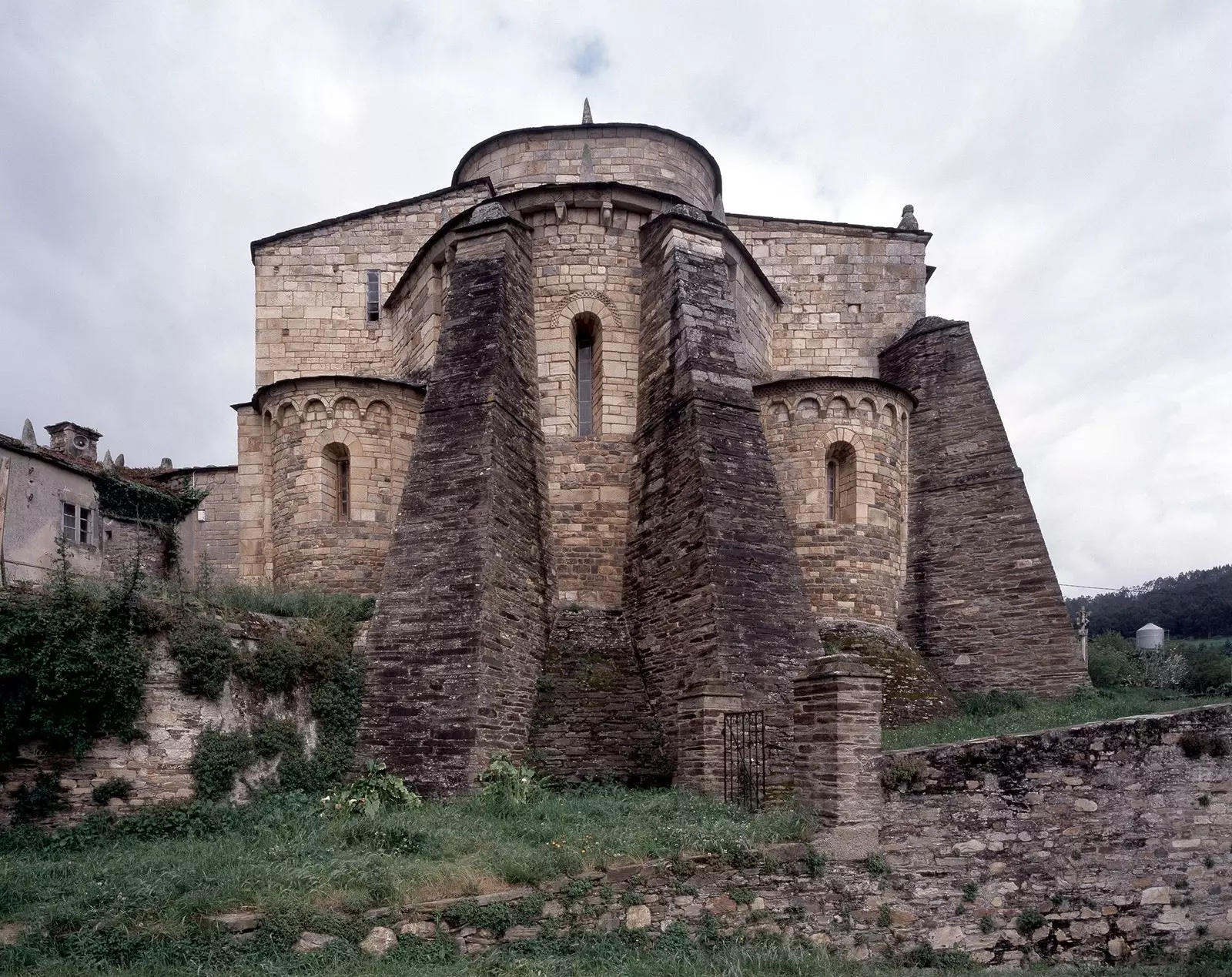
Basilica of San Martin de Mondoñedo, in Foz
Wide is Galicia and as eclectic as its climate are its territories, having passed through them Romans, Swabians, Goths and Muslims, leaving all of them an imprint still in force. However, the Rías Altas, far from the traditional means of communication and bathed by a rough and unsafe sea, have maintained a particular idiosyncrasy.
To understand the isolation of these lands, it is advisable to cross the Foz estuary and approach the Basilica of San Martin de Mondonedo, an interesting Romanesque church that summarizes in its walls a history of isolation, refuge, and defense.
Up to here they arrived, pushed by the Atlantic winds, hundreds of Roman-Breton families fleeing war and invasions in Britain, caused by the abandonment of the island by the Roman Empire in the 5th century.
They settled among the pines and granite, in a land very similar to the west of England and Wales, where they came from, maintaining its Breton identity during the Swabian domination, and resisting, stuck to the coast, hidden behind the mists of the mountains, the Muslim invasion of the year 711.
The Basilica of San Martin de Mondoñedo, where the Celtic rule had been maintained, it offered refuge to the Galician bishops who were escaping from the Arabs, becoming the first cathedral church in Christian Spain.
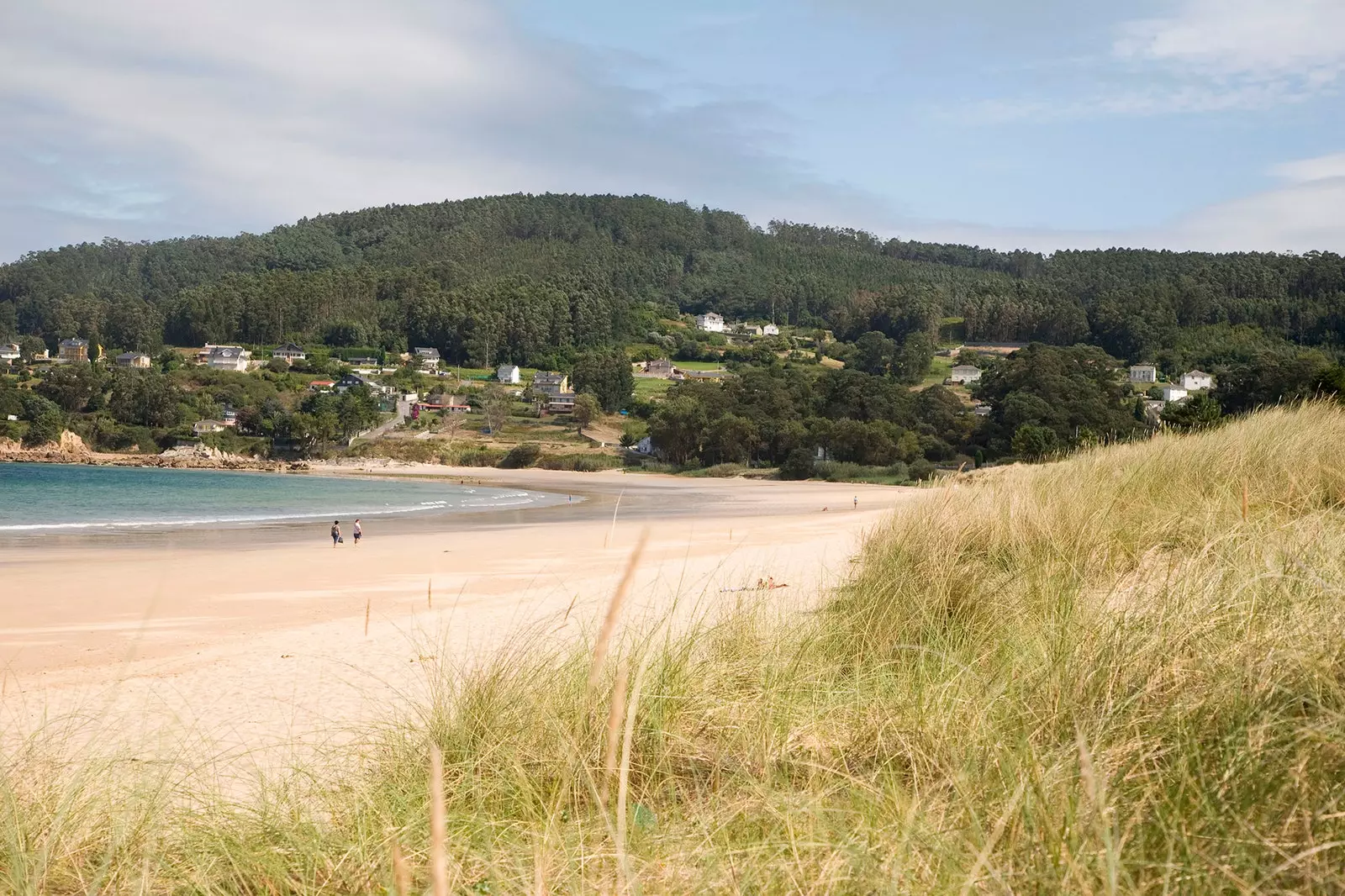
area beach
Celta is, truly, the landscape that can be glimpsed behind the shoulders of the road, in the direction of nursery. The wide beaches, cut by flat cliffs, dotted with isolated white houses, offer a landscape similar to Welsh or Scottish, always rocked by the strong Atlantic winds.
On a rock spur, imperturbable to the force of the sea, is the Castro of Fazouro, evidencing the link that, since ancient times, the inhabitants of the Rías Altas have had with the wide ocean that covers their backs.
However, the relationship between the two runs through a tightrope of love and misfortune, because the sea does not understand friendships. A good example of this is found as soon as we look out over the Viveiro estuary: from the road we can glimpse, attached to the eastern shore of the estuary, Area beach, where a decade ago archaeologists unearthed the ruins of a Roman and medieval town which, according to local legends, was buried by a terrible spring tide that lulled the region to sleep for centuries.
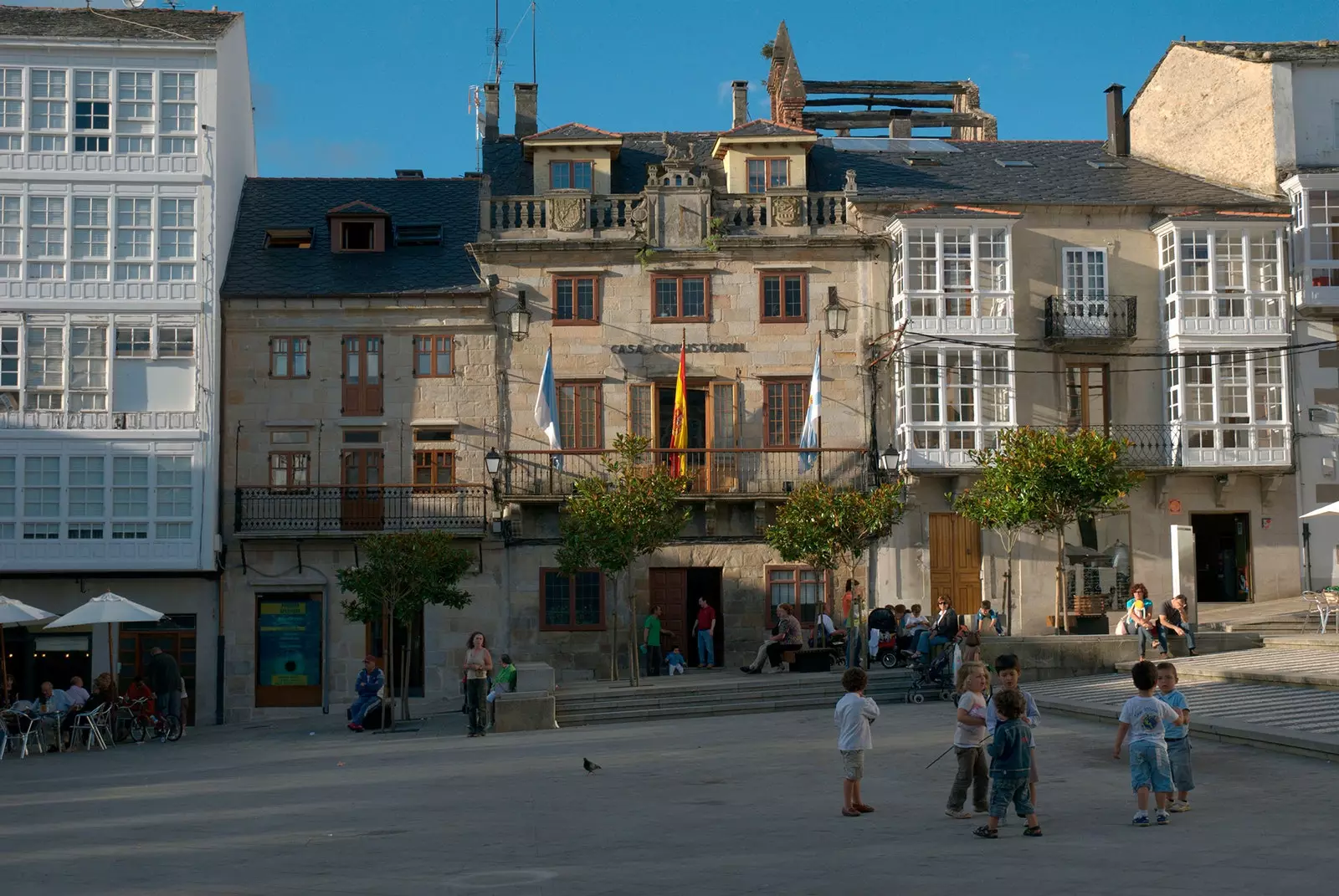
Through the streets of Viveiro
Viveiro, on the other hand, is a lively and cheerful town, that sheds its skin in summer to welcome tourists and bathers who come to the excellent rural accommodation that the surrounding area offers. Here all the heavies of Spain congregate during the Resurrection Fest, surrounded by products such as scallops, raxo and white wines with a fruity palate, which make the town a gastronomic benchmark.
Just have to get lost in the medieval alleys of Viveiro to find a tavern in which to calm the appetite caused by the hours in the car, and fall into drowsiness lulled by the verses of Nicomedes Pastor Diaz, the most famous of the Spanish romantics, and a native of the town.
About sailors and travelers, Pastor Díaz versed: "Uncertain furrowed by the Ocean, / that before its barren immensity lost / course you search for the far end of the hidden antipodal hemisphere, / keep going, keep daring, your bold and safe flight / And there on the high seas it pounces on you / its immense loneliness is your hope / your guide is in heaven.”
Once rested, it is not advisable to ignore the verses of who was the best known poet of these lands, so we must continue, Continue west towards the O Barqueiro estuary.
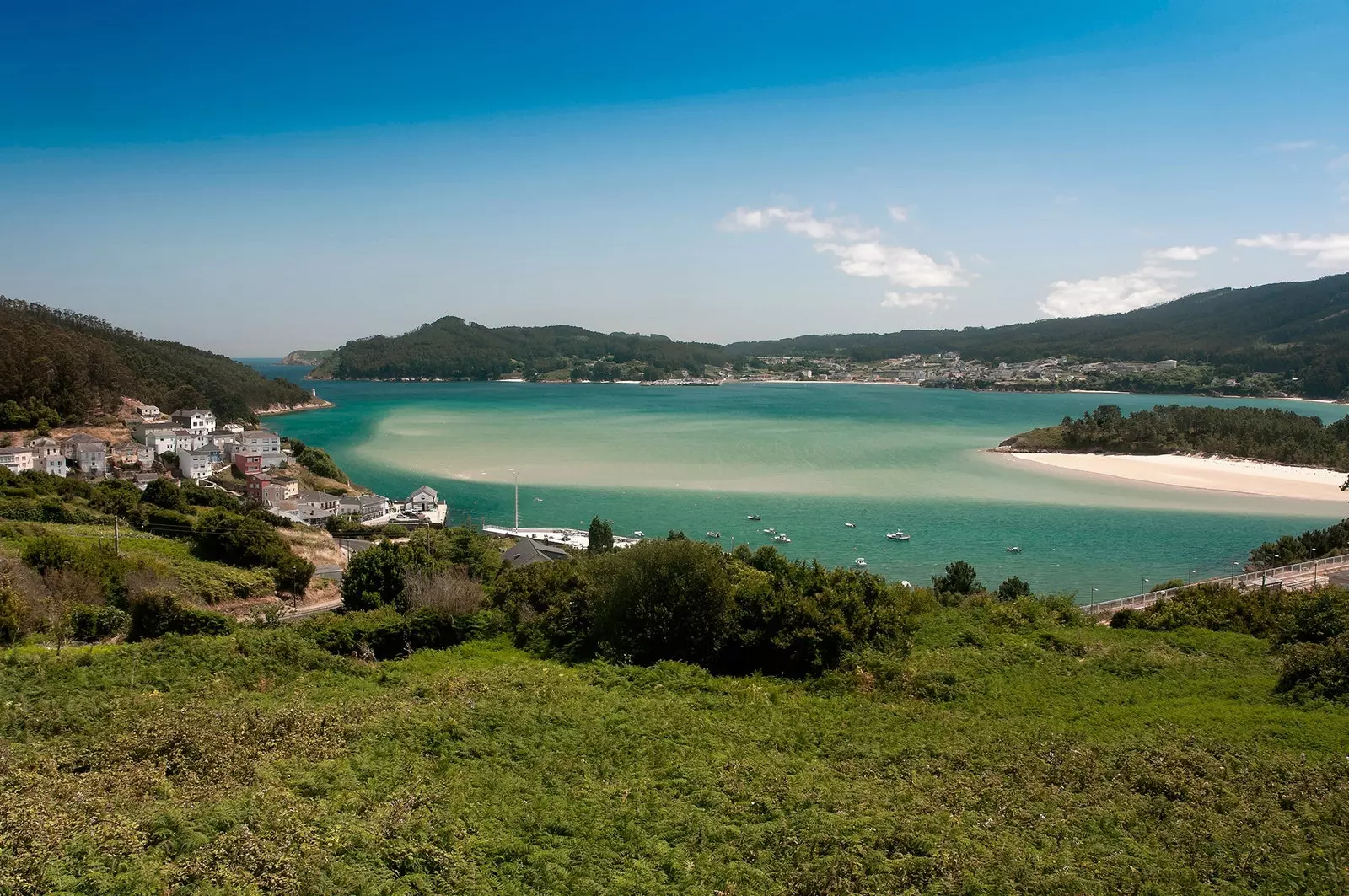
Or Barqueiro
The road runs through hills overlooking green and gray capes like the sky that covers the traveler. Suddenly, Lorenzo appears, and then it is time to plunge into the warm waters of the Area Longa beach, located in the same O Barqueiro estuary, a natural paradise for lovers of solitude and water sports such as windsurfing or stand up paddle.
The Stake of Bars serves as a backdrop to the bathroom, and few can resist the temptation to dry their wet hair with the continuous blowing of the wind, their arms open, suspended in the air by the force of Nature, looking out over the deep cliffs.
Always windy, the winding road that leads to the extreme north of the Iberian Peninsula allows you to see from the heights the coquettish O Barqueiro estuary, a miniature of its older sisters, the Arousa and Vigo estuaries, furrowed by sandbanks where shellfishers and fishing boats toil.
From the top, the Bares lighthouse not only monitors maritime traffic: thousands of migratory birds pass by the great rock of La Estaca on its long journeys from north to south, from east to west, offering ornithology lovers a privileged observatory.
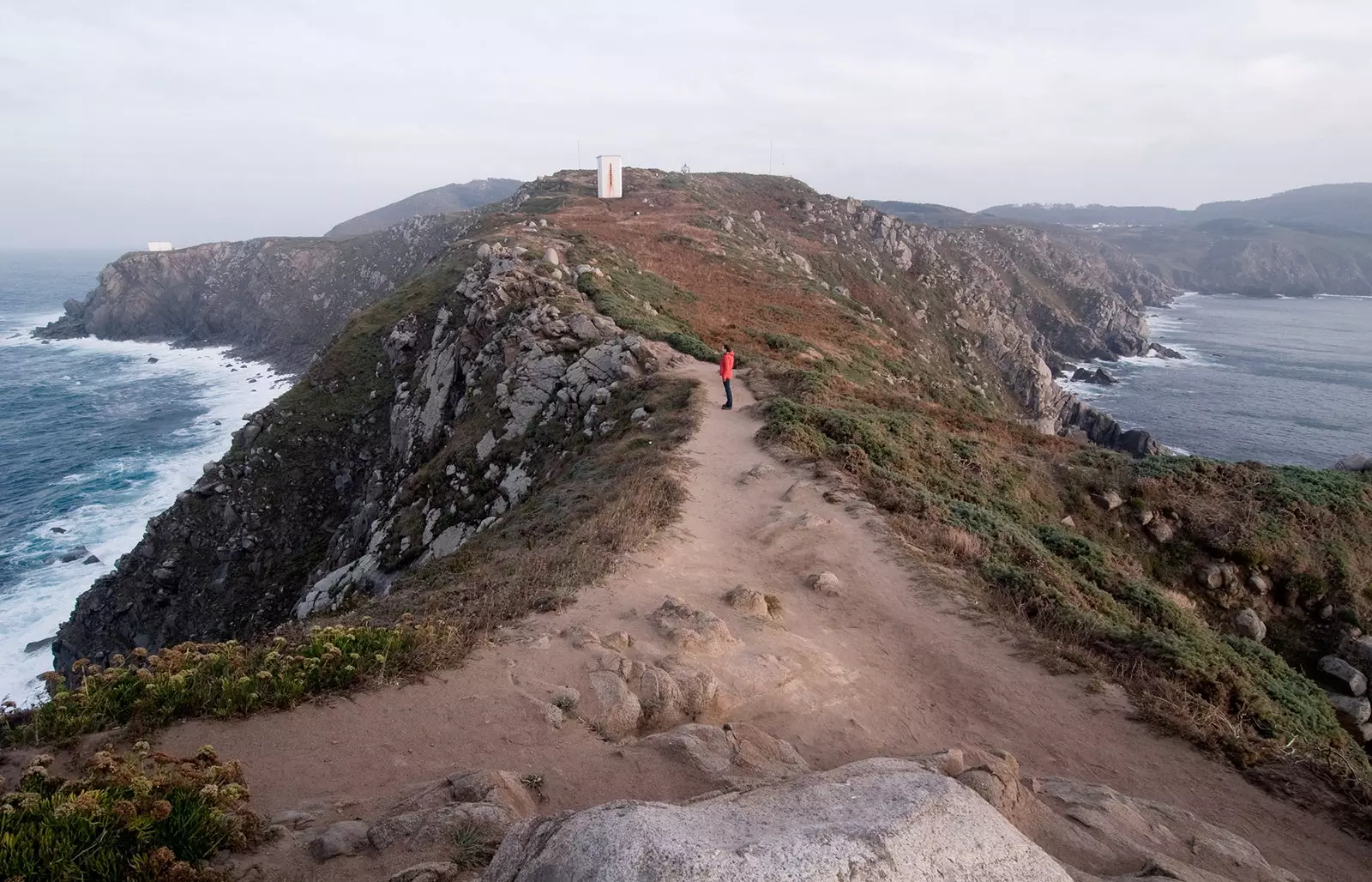
Bars Stake
Between Cape Ortegal, visible from La Estaca like the spiny tail of an immense dragon submerging in the sea, and Bares, the most rugged coastline in Spain, consisting of high granite cliffs that offer very few natural shelters sailors surprised by the storm. Wrecks and stories of traumatic shipwrecks abound among the populations of the region, accustomed to seeing how the ocean that provides them with food and work takes away their loved ones.
In the midst of such laconism, opens Ortigueira, a town with a bourgeois air in an eminently rural and fishing territory, what do you expect look fine and elegant between the woods and the nets, like a lady dressed for Sunday surrounded by sober peasant coats.
Proud of its idiosyncrasy, Ortigueira hosts every year the Festival do Mondo Celta, an international meeting that brings together groups of Celtic folklore from both Galicia and France, Ireland and the United Kingdom, flooding a town with the sound of bagpipes that remains silent and thoughtful for the rest of the year, providing its inhabitants with a quiet life without the pressures of the urban world.
So they tell us in the Inn O Malecon , where the neighbors kill their own mid-afternoon hunger based on pork shoulder, octopus and squid tapas, watered with the omnipresent local white wine, without being able to wait for a dinner that will also be substantial.
In Galicia you eat, and very well: everyone knows that. But what is unknown is that, 20 minutes from Ortigueira, you can digest on the cliffs of Vixía de Herbeira, the highest in continental Europe, that extend between Cape Ortegal and the charming town of San Andres de Teixido.
Here, the Rías Altas throw us one last challenge: turn off the car engine, get out, and start looking for one of the most famous banks in Spain, incomparable grandstand for an unforgettable sunset. A hint: do like Don Quixote, look under the blades of the towering windmills, without being distracted by its buzzing, and you will find the cliff of the giants.
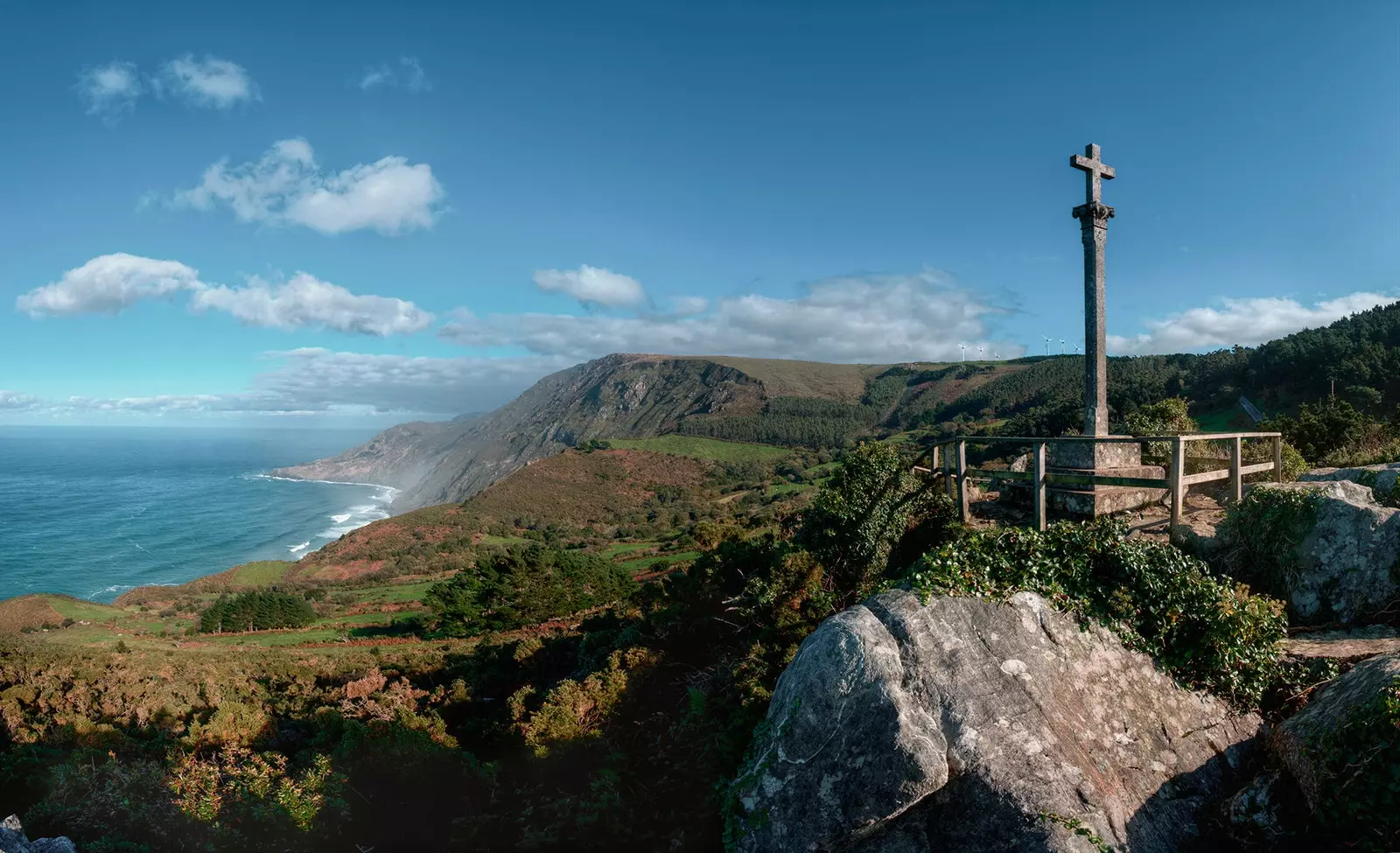
Cliffs in San Andres de Teixido
